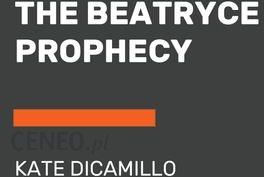

Rather, her character and those who surround her remind me most of the Beatitudes. Beatryce is not actively fighting a cultural barrier nor is she leading an army. Like Joan, she carries hope in her heart and faith that she will find her way home, even as the king and his henchmen close in to prevent the prophecy from coming true.īecause of these allusions to Joan of Arc, some reviewers insist the story is one of female empowerment, but I find that limiting. Like Joan, Beatryce is determined and brave. As a character of goodness and light, DiCamillo’s Beatryce draws others to her, especially those on the fringes of society.īut in an interview with BookPage, DiCamillo tells us she had another heroine in mind, Joan of Arc.

In such a setting, I asked myself if DiCamillo might also be alluding to another well-known medieval figure, Dante’s Beatrice. “Or as something that has yet to happen? Will I become a prophecy?”ĭiCamillo has crafted a simple story with great emotion, a poignant simplicity that hints at the profound. “As something that happened?” said Beatryce. “Will you say that a girl named Beatryce, who does not know where she came from or who her people are, held on to a goat and sorrowed?” “Will you write of this in the Chronicles?” she asked.


In Kate DiCamillo’s The Beatryce Prophecy, the monks of the Order of the Chronicles of Sorrowings are harassed by an ornery goat, one that soon finds a different purpose in comforting a lost girl.īeatryce is found by Brother Edik, who long ago foretold that a girl child “will unseat a king.” But Beatryce doesn’t remember why she fled her home. We may lose those we love along the way, but unexpected friends, like a goat, can bring delight and comfort. The world is not always a kind place, said Brother Edik.


 0 kommentar(er)
0 kommentar(er)
